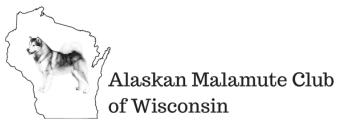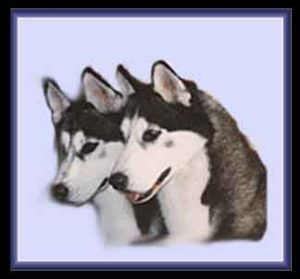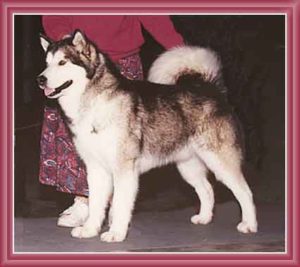|
ALASKAN MALAMUTE
|
SIBERIAN HUSKY
|
| FUNCTION: |
To carry a heavy load. |
To carry a light load at a moderate speed over a great distance. |
| GENERAL APPEARANCE: |
Powerful, substantially built, heavy boned, structured for strength and endurance. |
Body proportions and form reflect balance of power, speed, and endurance. |
| SIZE AND SUBSTANCE: |
Dogs 25″ at the shoulder, 85 lbs.
Bitches 23″ at shoulder, 75 lbs.
When dogs are equal in all other aspects, the dog nearest the desired freighting size is preferred. The bigger should not necessarily be considered to be the better. |
Dogs 21″ – 23-1/2″ at withers, 45 to 60 lbs.
Bitches 20″ – 22″ at withers, 35 to 50 lbs.
Disqualification: Dogs over 23-1/2″, Bitches over 22″ |
| EXPRESSION: |
Soft, indicating an affection disposition. |
Keen, but friendly; interested and even mischievous. |
| EYES: |
Brown, almond shaped, medium size, dark eyes preferred in all colors except reds; obliquely set in skull. Blue eyes disqualified. |
Almond shaped, moderately spaced, set a trifle obliquely. Blue or brown, one of each color, or parti-color. |
| EARS: |
Medium size, but small in proportion to the head, triangular, slightly rounded at the tips – set wide apart on the outside back edges of the skull on line with the upper corner of the eye, giving ears the appearance (when erect) of standing off from the skull. This description of proper ear placement is accurate only when the eyes have the correct oblique placement in the skull. |
Medium size, triangular, close fitting, set high on the head. Thick, well furred, slightly arched at the back, strongly erect, slight rounded tips pointing straight up. |
| HEAD: |
Broad and deep, in proportion to body, muzzle bulky. |
Medium, in proportion to body. |
| STOP: |
Top line of skull and top line of muzzle show a slight break downward from a straight line as they join. |
Well-defined. |
| TOPLINE: |
Gently sloping to the hips. |
Level from withers to croup. |
| COAT AND COLOR: |
Thick, coarse guard coat – never long and soft – usually shades of gray to black and white (sable and red are also acceptable – always with white). The only solid color allowable is white. Broken colors, uneven splashings are undesirable. |
Double, medium in length, soft dense undercoat, guard hairs of outer coat straight and smooth lying (never harsh or standing straight off). All colors from black to pure white. Variety of markings. |
| PIGMENT: |
Black. brown in red dogs. “Snow nose” acceptable. |
Black in gray, black, tan dogs. Liver in copper dogs. Flesh colored in pure white dogs. “Snow nose” acceptable. |
| FEET: |
Large, compact, snowshoe. Tough pads. |
Oval, not long. Medium in size, compact, well-furred between toes and pads. Tough pads |
| TAIL: |
A waving plume, moderately set, follows the line of the spine at the base. Never tightly curled or lying on the back |
Fox-brush, set just below the level of the topline, carried in a sickle curve or trailing. |






